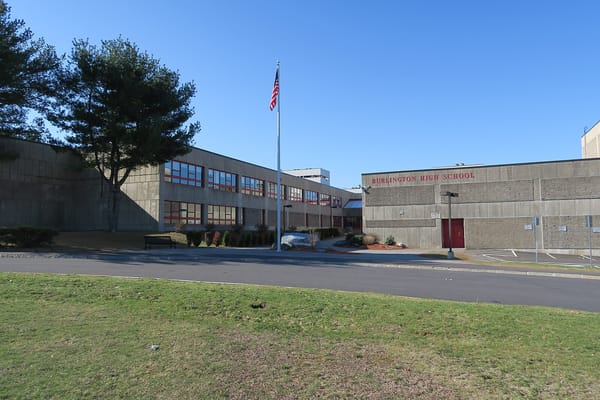Ralph, The Psittacine Queen
Columnist Bill Boivin shares the adventures and misadventures of a white-crowned pionus called Ralph.
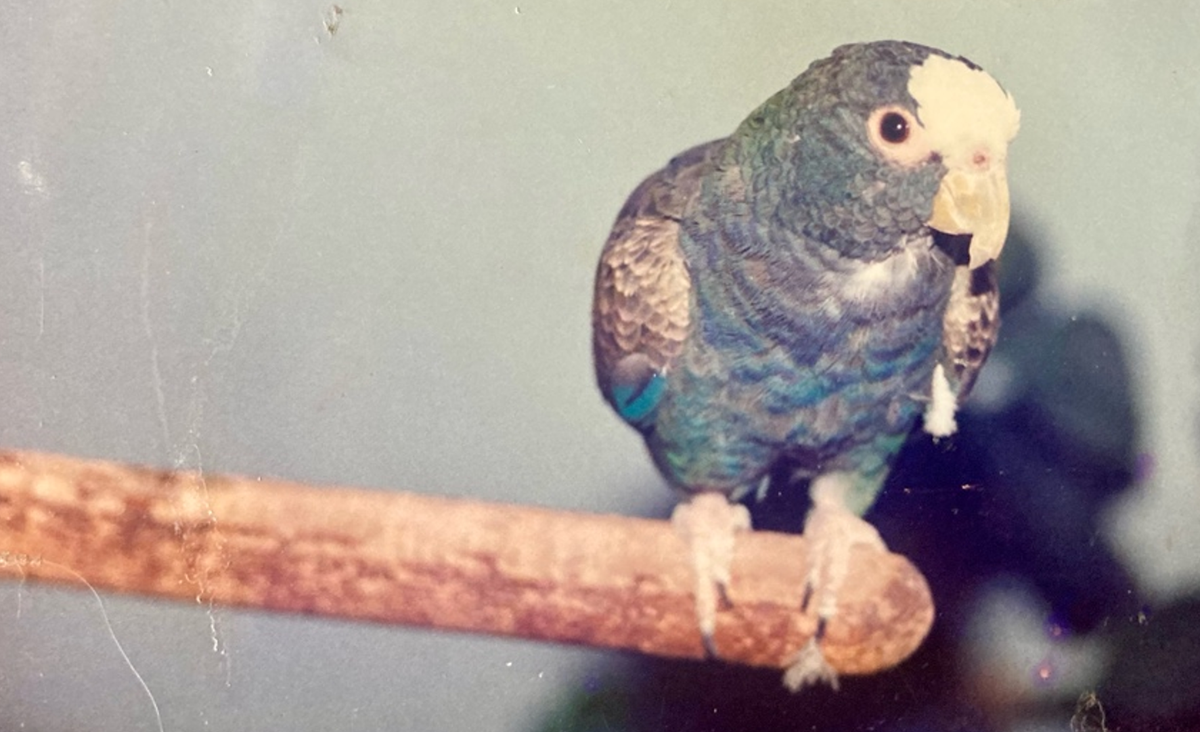
Picture this: You're a tiny newborn bird, and you've been enclosed inside a dark container for days. It finally opens, and there is...Mommy!
Mommy, in this case, was my wife Jane, and the bird was Ralph – a pionus, still in its fuzzy baby feathers. Ralph emerged from a small cardboard box contained in the first shipment of birds she helped unpacked at the pet store where she worked. The two fell in love instantly, a bond that lasted more than 20 years.
Ralph was a Pionus senilis (senilis or “senile” because they have white “hair” on their head), the White-crowned pionus, a species of small parrot about the size of the blue jay. The Pionus genus contains eight different species and sits within the family named Psittacidae and the order Psittaciformes (SIT-uh-si-FOR-mis), which contains all parrots. Pionus senilis are native from southeastern Mexico to Western Panama.
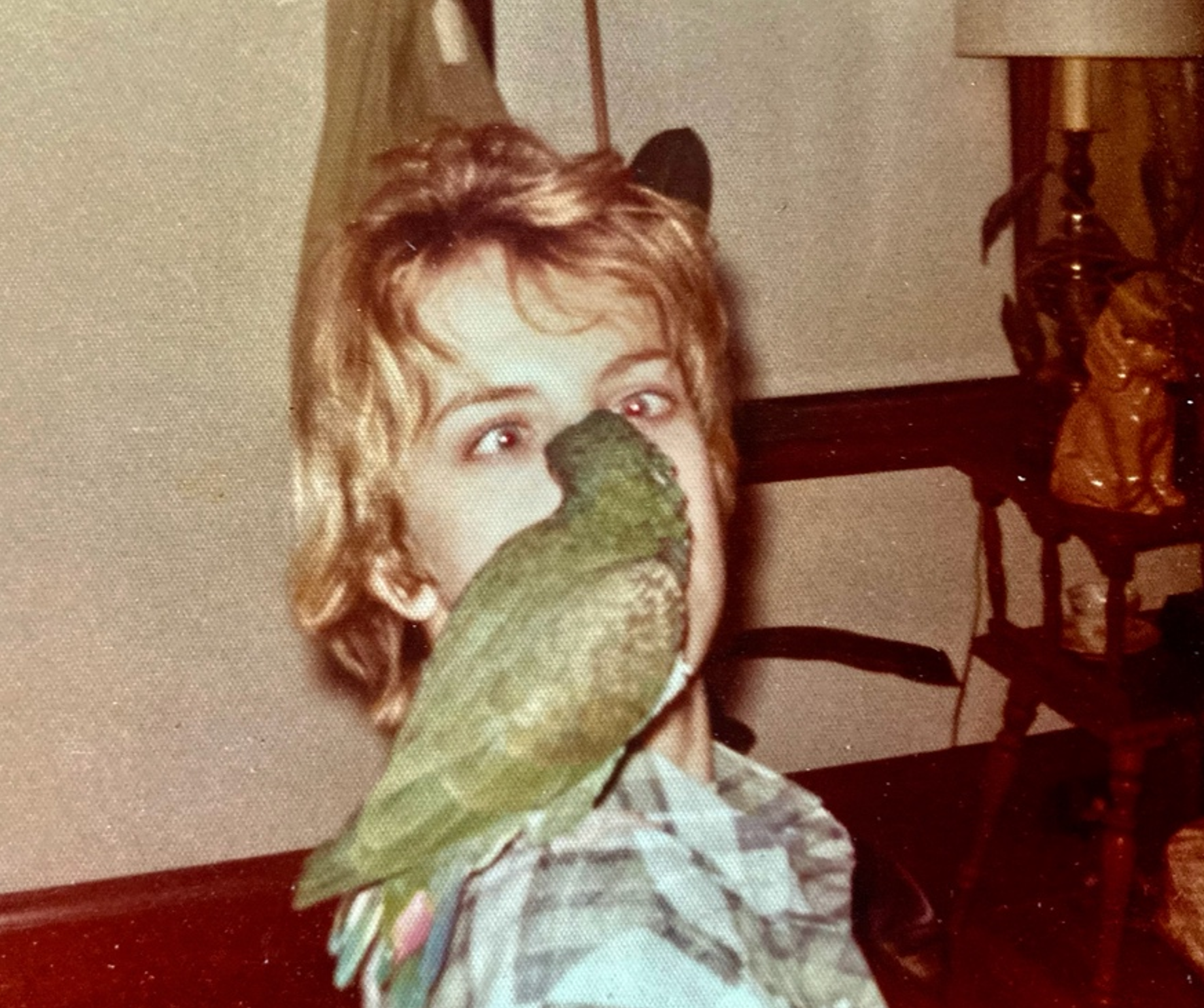
Determining the sex of birds is either very easy or very hard. In many species, particularly those in which the female exclusively does the nesting (think: cardinals), the male is often bright and flashy to distract predators away from the nest, while the female is inconspicuous. Where both sexes share nesting, they are often colored similarly. The white-crowned pionus shares nesting responsibilities among the sexes, and so the males and females are similarly colored.
While it was not clear what sex the bird was, some folks at the pet store and later vet visits, who seemed knowledgeable, determined by subtle clues such as face shape or overall size that our avian buddy looked like a male. And so we named it Ralph. When we told a friend of ours, also named Ralph, about the name, he jokingly said, “since you named him after me, he can have my middle name too as long as you never tell anyone what it is”. Intrigued, we agreed. So, the white crowned pionus’ full name was Ralph Laverne Boivin.
Ralph lost his baby feathers quickly and within 6 months looked like an adult pionus. We taught him to fly by sitting on the floor and gently tossing him back and forth. The immediate reaction was to flap his wings in a panic. Eventually he learned to control his wings, and to fly.
Wing clipping is a common practice with pet birds; it limits their flight to a downward glide, preventing escape. After he learned to fly, we clipped Ralph’s wings every so often. It worked well enough that we were comfortable taking him outside with us, usually perched on a shoulder. If he jumped off, he would just softly land on the ground a few feet in front of us, where we could scoop him up. And that worked out just fine…until it didn’t.
One day, while sitting on our front stairs, Ralph jumped off my shoulder, flapping as he descended towards the ground, as usual. But this time he flapped more energetically, skimming the ground and gradually gaining altitude! He rose as he flew across the street, ending up in a maple tree about 20 feet off the ground. We tried coaxing him but, as an inexperienced flyer, he was scared to jump from that height. I think he was as surprised as we were.
I told Jane to keep her eye on the bird while I ran in to call the fire department. I explained the crisis. Their answer? “We don’t rescue animals.” Now we were in a pickle.
I don’t do heights well, including on ladders, but it was Ralph! I got a ladder and said to Jane, “I am going up the tree. If I can’t get down, hopefully the fire department will come and rescue me.” Up I went until I was level with Ralph, who was about 6 feet away. I used a branch that I snapped off the tree to try to coax him to perch on it. No luck; he just backed further away. So, I snapped a longer branch that had a right angle shoot at the end. I extended the branch so the shoot was behind Ralph and bopped him in the head from behind. That caused him to take a step or two in my direction.
After several such moves, Ralph was within reach, and I grabbed him and stuffed him inside my shirt. I was able to descend – No fire department necessary! – and we got the bird successfully back into the house. Ralph was never again outside, uncaged.
At about the age of two Ralph had his first health issue. He started acting weirdly, making strange little noises, and hiding under our couch. Symptoms worsened for a day or two, prompting us to call a tropical bird specialist at Angell Memorial in Boston. “Bring him in first thing tomorrow” she said. It was winter, so the next morning I sent Jane out to warm up the car while I got the transport cage ready. Then I went to retrieve Ralph from under the couch where he was making distressful sounding noises.
I had to lie on the floor and stretch to grab the bird and pull him out. In so doing, I noticed something on the floor behind Ralph. It was an egg! So much for the “knowledgeable” assessment that it “looked like a male”! After celebrating the development with Jane, I called the bird specialist and cancelled the appointment. It turns out, I told them, that the cause of HER distress was nothing more than puberty!

Ralph spent increasingly more time on the floor now. She chewed a hole in the side of a wicker laundry hamper at floor level, crawled inside, and laid her second egg. With a little research, I learned the pionus is a ground-nester! So, we removed the clothes from the laundry hamper, put in a little nesting material, and let her have it.
She was a happy girl. She created a clutch of 3 or 4 little eggs and happily spent hours sitting on them. We knew they would never hatch and would eventually go bad, so we took them away. She replaced them. That’s when we contacted the bird vet and asked what we should do. “If you quickly take them away,” she said, “she will constantly replace them and run the risk of exhausting herself trying to keep the clutch full.” We were told she could actually “lay herself to death.” The solution was to let her have her 3 or 4 eggs for a while until SHE decided they were not going to hatch. Then she would abandon the nest, and we could remove the eggs. That worked. The next year, and annually thereafter, she went through the process again.
We had a friend with another female pionus who went through the same thing. However, “Carlton” never stopped laying, replacing all eggs taken away. To stop her laying, the vet ultimately put Carlton on birth control medication (yes, that’s a thing for birds, too).
Over her lifetime Ralph laid about 40 eggs. Each 1-inch egg was a tiny treasure and hard for us to part with. We once showed them to a carpenter working at our house. He offered to take some to his wife and have her paint bird pictures on them. We gave him six, which he successfully took to Illinois to have his wife paint. Forty years later, we still have these beautiful works of art in a small glass display case – one of our prize possessions.
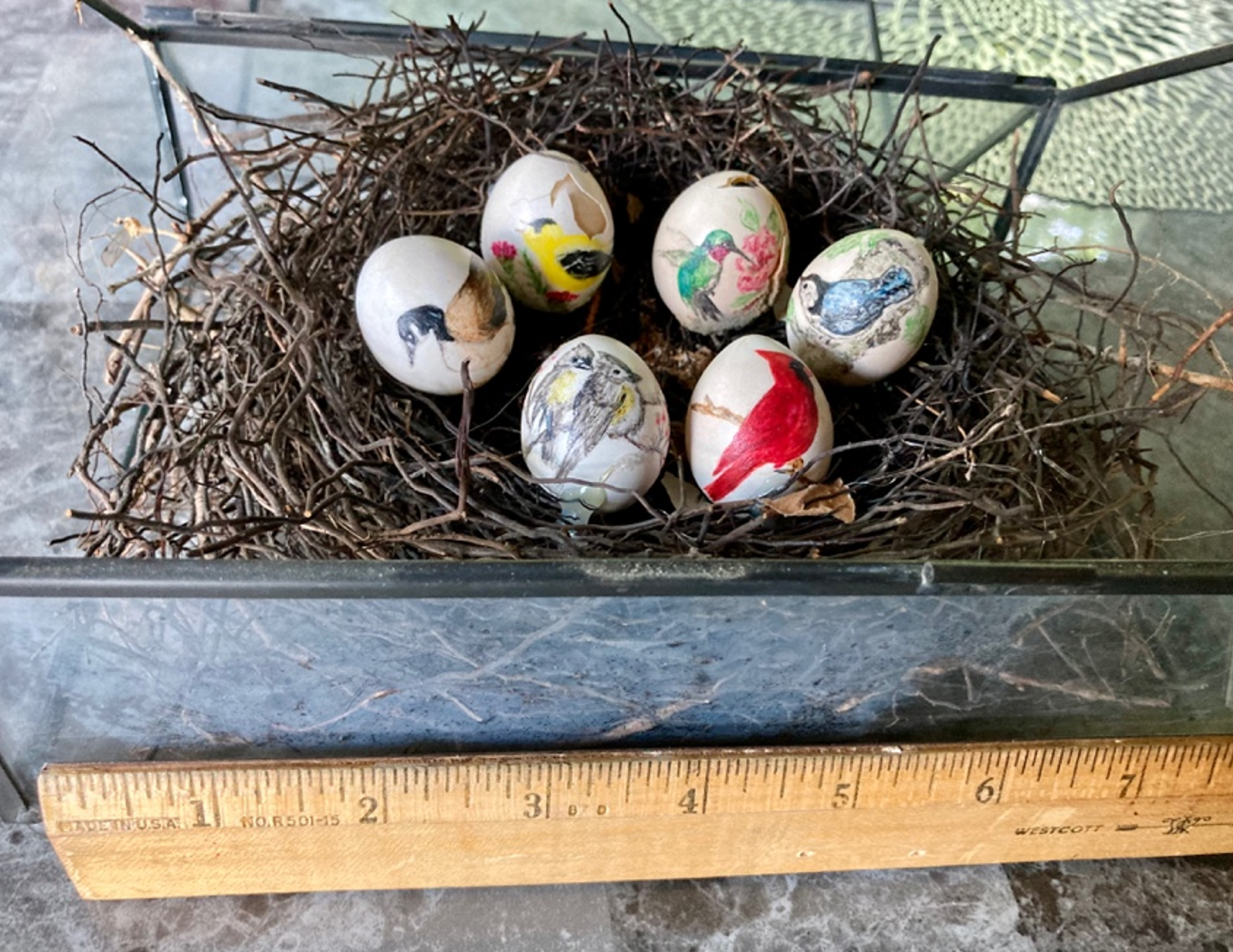
When we were home, all pets roamed free in the house – Ralph and our larger parrot Sam, 2 or 3 dogs, our 4’ iguana – even a few tiny finches. It was crazy and fun, and we wouldn’t have changed it for the world.
Whatever we were doing, Ralph usually wanted to help. She would perch on the faucet as we washed dishes, occasionally drinking or even hanging upside-down to bathe in the stream. She loved playing board games. If we were playing Sorry, she preferred the red pieces and would often steal them. While we ate, she stood by the side of our plates, helping herself.
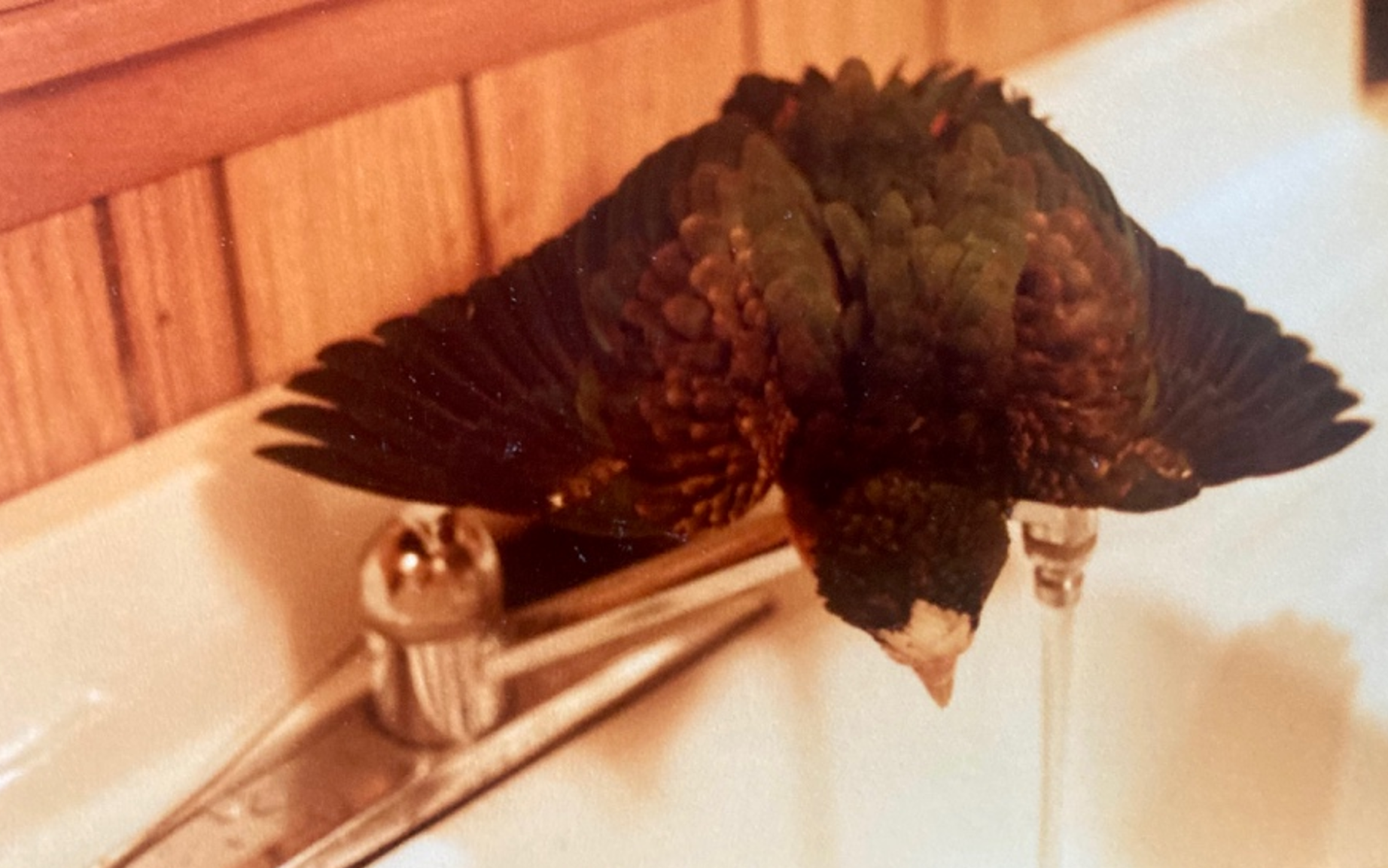
Ralph was also helpful in an … unconventional way. This may come as a surprise, but back in the seventies, Jane and I smoked a substantial amount of marijuana. Each ounce often contained sticks, twigs, and seeds that needed to be removed before a smokeable product could be achieved. That’s where Ralph came in. She would eat the seeds and toss all the twigs aside. She was actually quite helpful, unless she suddenly decided to flap her wings and blow half the pot away.
Keep in mind, marijuana back then was nothing like the high strength stuff of today. A few seeds were OK for a parrot to eat. I would not recommend doing that now, as today’s much higher THC content could be overwhelming for a lightweight bird. (FYI - we haven’t used pot in over 30 years.)
In a house full of animals, each with its own unique personality, watching their interactions was a highlight. Ralph ruled the house – queen of her domain. She became an expert flier and excelled at aerial acrobatics, zooming around the premises. She loved to torment her larger roommates just to reinforce who was boss. She would swoop within inches of the dogs’ faces just for fun.
Ralph’s brash attitude almost got the better of her one day. Our dog Doof was quietly sitting in the kitchen chewing on a tennis ball when Ralph walked in. (She felt like she owned the floor and would prefer that the dogs walked somewhere else.) For no reason at all she went right up to Doof, grabbed his tennis ball and tossed it aside. He retrieved it and resumed peacefully mouthing it. Ralph repeated her prior theft. Again, no reaction from the dog except to retrieve and resume.
When Ralph tossed his ball a third time, Doof had had enough. He stood up, placed one front foot on either side of her body, bent down to her level, and let out a loud bark. Reason might presume that this 8-oz bird would be intimidated by a 70-lb dog screaming at her. Not Ralph!As Doof barked right in her face, she calmly reached up and bit his nose. That was it for Doof; he could not let this pass.
Now, Doof understood that Ralph was a protected member of our pack, and he could not harm her, so what he did was astonishing. He lunged as if to bite her, placing her entire head in his mouth, touched his teeth on her neck and released! A gentle but very serious reminder that “I could squish you like a bug!” Jane and I both witnessed this. We were convinced he was going to bite her head off. He did not. Ralph was terrified and flew away as fast as she could. It was six months before she dared to walk on the floor again.
Ralph was about 20 when we moved to Burlington. She never adapted well to the new house and became ill about a year later. We took her to a bird specialist veterinarian who said she was dying. What!? She was only about 22. The vet gently explained that, for a small parrot, at her age she was an elderly old lady. We had no idea; we assumed all parrots lived 40 or 50 years. Within a day she was dead. We got her ashes and buried them under a nice tree in our yard. She would have liked it there.
Bill Boivin is a scientist, retired from 30 years of active duty with the United States Public Health Service. He is a Burlington Town Meeting Member and Conservation Commissioner. He and his wife, Jane, grew up in Lynn and now live in Burlington with their 2 mini dachshunds, 7 chickens, and Maya, a ball python. Bill and Jane have shared a love of nature, gardening, and wildlife for over 50 years. They have fostered, healed, raised, and loved a remarkable variety of animals in their time together. Learn more about Bill.


